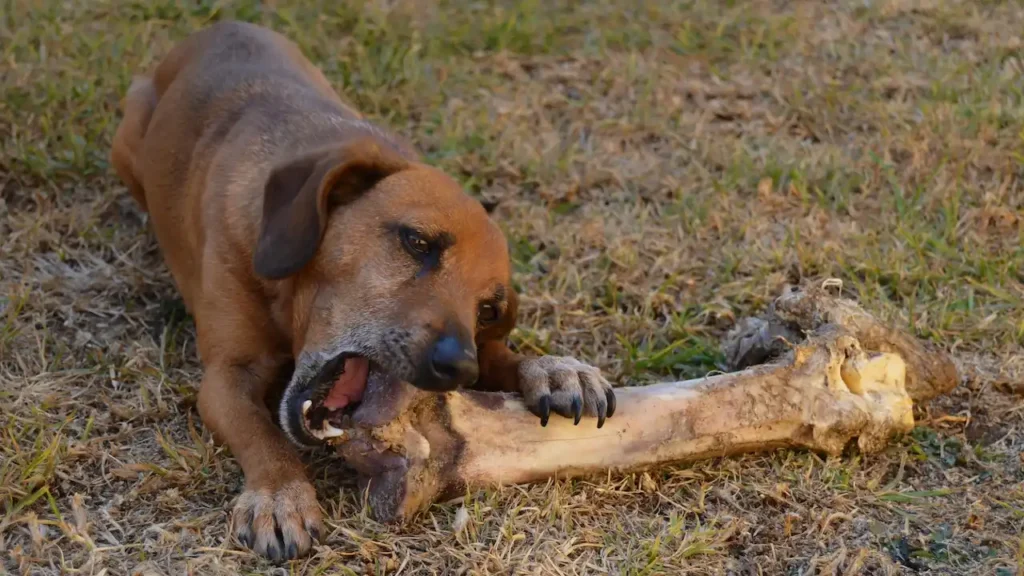Raw dog food diet has gained significant popularity among pet owners. They seek natural approach to feed their canine companions. This feeding regimen typically includes uncooked meat, bones, fruits, vegetables. Proponents argue that raw diets mimic what dogs would eat in the wild, while critics raise concerns about nutritional balance and safety.
Pros of Raw Dog Food Diets
Improved Coat and Skin Health
Raw food diet brings noticeable improvement coat and skin health. Dogs develop shinier, softer fur after switching to a raw diet. This transformation is attributed to the high levels of natural fats and oils present in raw meats.
Raw diets also contain fewer processed ingredients compared to commercial kibble. These additives sometimes irritate sensitive skin. By eliminating these potential irritants, raw diets reduce the occurrence of dermatitis and other skin-related problems.
Additionally, the inclusion of organ meats, vegetables, and fruits ensures that dogs receive a wide range of vitamins and minerals. For example, liver contains zinc and biotin. They play crucial roles in promoting resilient skin.
Better Dental Health
Dental care is an important aspect of overall canine health. Many traditional dog foods fail to adequately address this need. One of the standout advantages of raw diets is their positive impact on dental hygiene.
Chewing on raw bones provides a natural way to clean teeth and gums. The abrasive texture of raw bones helps scrape away plaque and tartar buildup. This reduces bad breath, and tooth decay.
In contrast, kibble-based diets lack this mechanical cleaning action. Their effects are typically minimal compared to the thorough cleaning provided by raw bones. Furthermore, the act of gnawing on bones stimulates saliva production. This plays a protective role in neutralizing harmful bacteria in the mouth.
It’s worth noting that not all bones are safe for dogs. Cooked bones should always be avoided. They can splinter and cause serious injuries. However, appropriately sized raw meaty bones offer a safer diet. These food supports dental health and enjoyment during mealtime.
Increased Energy Levels
Another compelling benefit of raw diets is the boost in energy levels. Dogs appear active, playful, and alert after transitioning to a raw food regimen. Proponents of raw diets argue that this increase in vitality stems from the body’s ability to digest and absorb nutrients from raw foods efficiently than from highly processed alternatives.
Kibble undergoes extensive cooking and manufacturing processes. These processes degrade certain nutrients. In contrast, raw foods retain their natural enzyme content. This aids digestion and allows for better nutrient absorption. As a result, dogs feel lighter, energized, and less sluggish after meals.
Moreover, raw diets eliminate common culprits of digestive upset, such as grains, soy, and artificial additives. This causes bloating, gas, and constipation in some dogs. Improved digestion translates to enhanced well-being.
Mimics Ancestral Eating Habits
Dogs evolved from wolves. Their diets consisted primarily of raw meat, organs, bones, and scavenged plant matter. Advocates of raw diets believe that returning to these ancestral eating patterns aligns closely with a dog’s biological needs.
Domestication has altered some aspects of canine physiology. But their digestive systems remain relatively unchanged. Dogs still possess short, acidic digestive tracts designed to process raw proteins and break down tough materials like bone.
Feeding them a diet rich in raw ingredients taps into this innate capability. This allows them to extract maximum nutrition from their food.
By providing a variety of muscle meats, organ meats, and raw bones, raw diets aim to replicate the diverse and balanced meals of the ancestors of dogs. This approach ensures that dogs receive key nutrients. Taurine is found in heart muscle, glucosamine from cartilage, and vitamin A from liver.
Reduced Risk of Diseases
Chronic diseases are linked to poor nutrition. One of the primary appeals of raw diets is their emphasis on wholesome, unprocessed ingredients free from artificial additives, preservatives, and fillers.
Processed dog foods rely heavily on carbohydrates. They provide little nutritional value for dogs. Raw diets, on the other hand, prioritize high-quality animal proteins and healthy fats.
Furthermore, the absence of synthetic chemicals and low-grade by-products reduces the likelihood of adverse reactions. Some studies suggest that a nutrient-dense, species-appropriate diet strengthens the immune system. This helps dogs fend off infections and age-related degenerative diseases.
For dogs already struggling with chronic illnesses, switching to a raw diet under veterinary supervision could serve as part of a holistic treatment plan. For instance, overweight dogs may benefit from the lower carbohydrate content of raw foods.
Cons of Raw Dog Food Diets
Raw dog food diets also come with significant drawbacks. From nutritional imbalances to safety concerns and cost considerations, these challenges highlight the importance of careful planning and professional guidance when feeding a raw diet.

Nutritional Imbalance
One of the most significant criticisms of raw dog food diets is the risk of nutritional imbalance. Commercially prepared dog foods are formulated to meet strict standards set by Association of American Feed Control Officials (AAFCO). Raw diets often lack the scientific rigor needed to ensure complete and balanced nutrition.
Without careful attention to detail, deficiencies in essential nutrients such as calcium, phosphorus, vitamins, and minerals can occur.
Calcium and Phosphorus are critical for bone development and maintenance, especially in growing puppies. An improper ratio between them can result in weak bones, skeletal deformities, and fractures.
Dogs require a variety of vitamins to support immune function, vision, skin health, and energy metabolism. A raw diet lacking sufficient organ meats, vegetables, and supplements may fail to provide adequate levels of these vital nutrients.
Omega-3 and omega-6 fatty acids play crucial roles in maintaining healthy skin, coat, and cognitive function. However, achieving the correct balance can be challenging without precise ingredient selection.
To mitigate these risks, pet owners must either invest in pre-formulated raw diets designed to meet AAFCO standards or work closely with a veterinary nutritionist to create a custom meal plan.
Food Safety Concerns
Another major concern with raw diets is the potential for foodborne illnesses. Raw meat, eggs, and dairy products harbor harmful bacteria such as Salmonella, E. coli, and Listeria.
While dogs have stronger stomach acids than humans and may tolerate some level of bacterial exposure, they are not immune to infection. Consuming contaminated food can lead to vomiting, diarrhea, fever, and lethargy.
Moreover, the risks extend beyond pets to human handlers. Preparing raw meals involves handling uncooked animal products. This increases the likelihood of cross-contamination in the kitchen. Surfaces, utensils, and hands can become vectors for spreading pathogens. This poses a threat to family members.
Cost and Convenience
Feeding a raw diet are time-consuming and expensive. This presents practical challenges for busy and budget-conscious pet owners. High-quality meats, organs, bones, and supplements come with a hefty price tag. Depending on the size and dietary needs of your dog, monthly expenses can far exceed the cost of premium kibble.
Commercially available raw food offers a convenient alternative but are typically priced higher than traditional dog food. For busy families, the demands of maintaining a raw diet simply outweigh the perceived benefits.
Potential for Harmful Ingredients
Improperly sized raw bones can become lodged in a dog’s throat. This leads to choking emergencies. Aggressive chewing on hard bones can crack teeth. Swallowed bone fragments may accumulate in the stomach that requires surgical intervention to remove.
In addition to bones, certain raw ingredients themselves can be problematic. Some fruits and vegetables, such as grapes, raisins, onions, and garlic, are toxic to dogs and should never be included in their diet.
Excessive amounts of liver or other organ meats can lead to vitamin A toxicity. This results in bone pain, joint stiffness, and reduced appetite.
Pet owners must exercise caution when selecting and preparing raw ingredients. Ensure that every component is safe and suitable for canine consumption.
Lack of Scientific Evidence
Despite the growing popularity of raw diets, there is a notable lack of robust scientific evidence supporting their superiority over balanced commercial dog foods.
Most claims about the benefits of raw feeding rely on anecdotal reports rather than peer-reviewed studies. This absence of conclusive data leaves many veterinarians skeptical about recommending raw diets as a blanket solution for all dogs.
Critics argue that domesticated dogs have adapted to consume a wider range of foods beyond raw meat. Modern dog foods are formulated based on extensive research into canine nutrition. This ensures they meet the specific needs of different life stages, breeds, and activity levels. In contrast, raw diets lack this level of precision, leaving room for error.
Not Suitable for All Dogs
Furthermore, each dog is unique. Their varying nutritional requirements are influenced by age, breed, size, and health conditions. What works for one dog may not necessarily benefit another. Veterinarians emphasize the importance of consulting a professional before embarking on a raw diet.
Raw diets are not a one-size-fits-all solution. Pancreatitis, kidney disease, and gastrointestinal disorders require carefully tailored diets. Feeding a high-fat, high-protein raw diet to a dog with pancreatitis, for example, could exacerbate inflammation and worsen their condition.
Puppies and senior dogs also have unique dietary needs that must be addressed. Growing pups require precise amounts of calcium, phosphorus, and calories to support rapid development. Nutritional imbalances during this critical stage can lead to lifelong complications.
Older dogs struggle with dental issues, reduced appetite, and diminished digestive efficiency. A raw diet that includes large bones and tough textures might prove difficult for them to manage.
Additionally, some dogs exhibit adverse reactions to sudden dietary changes. Transitioning to a raw diet should always be done gradually and under veterinary supervision to minimize risks.
The decision to feed your dog a raw food diet ultimately depends on your pet’s individual needs. While raw diets offer potential benefits, they also come with challenges. By weighing the pros and cons carefully—and seeking guidance from qualified professionals—you can make an informed choice to support your dog’s health.




